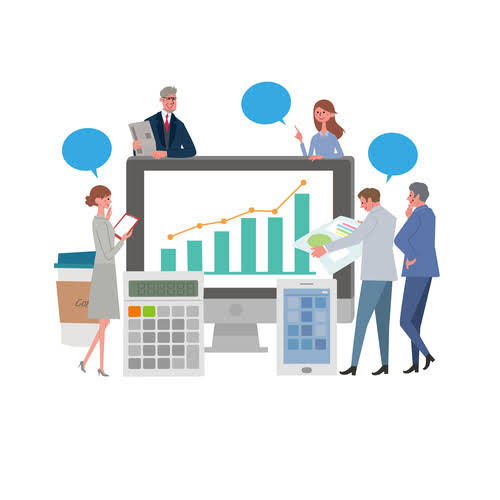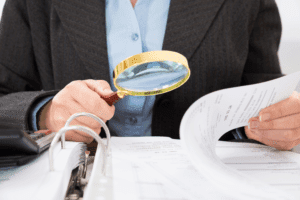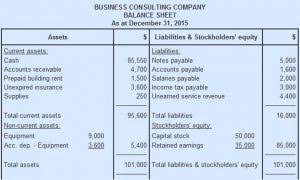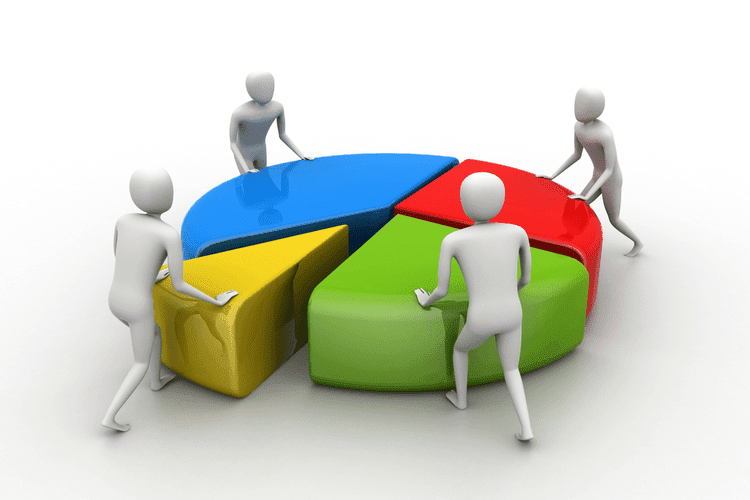
Many of the best accounting software options can help you with this, thankfully. When you talk to a financial professional about depreciation, they’re going to recommend one of two methods. The two methods are the double declining method, and the straight line depreciation method. Here, with proper double declining depreciation formula, you can accelerate the depreciation value of the assets.

This is preferable for businesses that may not be profitable yet and therefore may not be able to capitalize on greater depreciation write-offs, or businesses that turn equipment over quickly. In contrast to straight-line depreciation, DDB depreciation is highest in the first year and then decreases over subsequent years. This makes it ideal for assets that typically lose the most value during the first years of ownership. And, unlike some other methods of depreciation, it’s not terribly difficult to implement. The cost of the truck including taxes, title, license, and delivery is $28,000. Because of the high number of miles you expect to put on the truck, you estimate its useful life at five years.
Step two
The final step before our depreciation schedule under the double declining balance method is complete is to subtract our ending balance from the beginning balance to determine the final period depreciation expense. The most common declining balance method is double declining balance (DDB). The word double comes from the fact that the depreciation rate is two times the straight-line depreciation rate; you simply multiply the straight-line rate by two. Of course, the pace at which the depreciation expense is recognized under accelerated depreciation methods declines over time. Even if the double declining method could be more appropriate for a company, i.e. its fixed assets drop off in value drastically over time, the straight-line depreciation method is far more prevalent in practice. The double declining balance (DDB) depreciation method is an approach to accounting that involves depreciating certain assets at twice the rate outlined under straight-line depreciation.

On the other hand, with the double declining balance depreciation method, you write off a large depreciation expense in the early years, right after you’ve purchased an asset, and less each year after that. So the amount of depreciation you write off each year will be different. With the sales journal, you depreciate less and less of an asset’s value over time. That means you get the biggest tax write-offs in the years right after you’ve purchased vehicles, equipment, tools, real estate, or anything else your business needs to run. In the double-declining method, depreciation expenses are larger in the early years of an asset’s life and smaller in the latter portion of the asset’s life.
You can cover more of the purchase cost upfront
The beginning book value is the cost of the fixed asset less any depreciation claimed in prior periods. Under the DDB method, we don’t consider the salvage value in computing annual depreciation charges. Instead, we simply keep deducting depreciation until we reach the salvage value. As you use the car or truck, it accumulates wear and tear, as well as mileage. The useful life of a car isn’t very long, especially when being used for business purposes. In this case, you’d want to use an accelerated method of depreciation.
The double-declining balance (DDB) method is a type of declining balance method that instead uses double the normal depreciation rate. The double-declining method of depreciation accounting is one of the most useful and interesting concepts nowadays. It is also one of companies’ most popular methods of charging depreciation. For accounting, in particular, depreciation concerns allocating the cost of an asset over a period of time, usually its useful life. When a company purchases an asset, such as a piece of equipment, such large purchases can skewer the income statement confusingly.
The Double Declining Balance Depreciation Method.
The idea is that the asset’s value declines more steeply in the early years of usage. The result is that the depreciation expenses are larger in beginning and then get smaller over time. Because the depreciation expenses are larger in the early periods of the asset’s useful life, the
savings are greater in the beginning of the depreciation cycle and the tax benefits come sooner. The double declining balance method accelerates depreciation charges instead of allocating it evenly throughout the asset’s useful life. Proponents of this method argue that fixed assets have optimum functionality when they are brand new and a higher depreciation charge makes sense to match the fixed assets’ efficiency.
Declining Balance Method: What It Is, Depreciation Formula – Investopedia
Declining Balance Method: What It Is, Depreciation Formula.
Posted: Sat, 25 Mar 2017 17:36:16 GMT [source]
They tend to lose about a third of their value following their initial purchase, and the value falls from there. As such, you may want to account for this loss in value by using an accelerated depreciation rate. A big part of being a business owner is understanding the assets and expenses your business has. Most businesses, no matter the size, have assets that will lose their value over time. When you purchase these assets, you’ll have to choose your method of depreciation. Because these cannot be considered an immediate expense, they have to be accounted for over time.
For reporting purposes, accelerated depreciation results in the recognition of a greater depreciation expense in the initial years, which directly causes early-period profit margins to decline. The amount shown in the depreciation expense column is the dollar amount you will use for the adjusting entry to record depreciation expense for the year. The accumulated depreciation column shows the balance in the accumulated depreciation ledger account at the end of the year after the adjusting entry has been recorded. Book value at the end of each year equals the original cost of the asset minus the balance in accumulated depreciation at the end of the year. The dollar amount for book value will appear on the balance sheet at the end of the year. At the end of the useful life of this asset, the balance in accumulated depreciation must equal cost of the asset minus residual value, $45,000.
The double declining balance depreciation rate is twice what straight line depreciation is. For example, if you depreciate your machine using straight line depreciation, your depreciation would remain the same each month. Double declining balance (DDB) depreciation is an accelerated depreciation method. DDB depreciates the asset value at twice the rate of straight line depreciation. A variation on this method is the 150% declining balance method, which substitutes 1.5 for the 2.0 figure used in the calculation. The 150% method does not result in as rapid a rate of depreciation at the double declining method.
The drawbacks of double declining depreciation
The accounting concept behind depreciation is that an asset produces revenue over an estimated number of years; therefore, the cost of the asset should be deducted over those same estimated years. While some accounting software applications have fixed asset and depreciation management capability, you’ll likely have to manually record a depreciation journal entry into your software application. Using the depreciation declining balance method is a wonderful way to depreciate the asset’s value over its useful life. If you find it difficult to implement it in your organization then you can outsource this work to the experts. You calculate it based on the difference between your cost basis in the asset—purchase price plus extras like sales tax, shipping and handling charges, and installation costs—and its salvage value.
- The double declining balance method (DDB) describes an approach to accounting for the depreciation of fixed assets where the depreciation expense is greater in the initial years of the asset’s assumed useful life.
- Toward the end of its useful life, the vehicle loses a smaller percentage of its value every year.
- Adam received his master’s in economics from The New School for Social Research and his Ph.D. from the University of Wisconsin-Madison in sociology.
- And if it’s your first time filing with this method, you may want to talk to an accountant to make sure you don’t make any costly mistakes.
- On the other hand, with the double declining balance depreciation method, you write off a large depreciation expense in the early years, right after you’ve purchased an asset, and less each year after that.
- The formula used to calculate annual depreciation expense under the double declining method is as follows.
Because of this, it more accurately reflects the true value of an asset that loses value quickly. When you drive a brand new vehicle off the lot at the dealership, its value decreases considerably in the first few years. Toward the end of its useful life, the vehicle loses a smaller percentage of its value every year.
Just because you may need to calculate your depreciation amount manually each year doesn’t mean you can change methods. Once you choose a method, you need to stick with it for the duration. Eric Gerard Ruiz is an accounting and bookkeeping expert for Fit Small Business. He completed a Bachelor of Science degree in Accountancy at Silliman University in Dumaguete City, Philippines. Before joining FSB, Eric has worked as a freelance content writer with various digital marketing agencies in Australia, the United States, and the Philippines. You can drag this formula down to period five without making any changes as long as you use absolute references.
Similarly, compared to the standard declining balance method, the double-declining method depreciates assets twice as quickly. Double declining balance is the most widely used declining balance depreciation method, which has a depreciation rate that is twice the value of straight line depreciation for the first year. Use a depreciation factor of two when doing calculations for double declining balance depreciation. Regarding this method, salvage values are not included in the calculation for annual depreciation. Let’s assume that a retailer purchases fixtures on January 1 at a cost of $100,000.
This method is more difficult to calculate than the more traditional straight-line method of depreciation. Also, most assets are utilized at a consistent rate over their useful lives, which does not reflect the rapid rate of depreciation resulting from this method. Further, this approach results in the skewing of profitability results into future periods, which makes it more difficult to ascertain the true operational profitability of asset-intensive businesses. If you compare double declining balance to straight-line depreciation, the double-declining balance method allows you a larger depreciation expense in the earlier years.
It is expected that the fixtures will have no salvage value at the end of their useful life of 10 years. Under the straight-line method, the 10-year life means the asset’s annual depreciation will be 10% of the asset’s cost. Under the double declining balance method the 10% straight line rate is doubled to 20%. However, the 20% is multiplied times the fixture’s book value at the beginning of the year instead of the fixture’s original cost.












